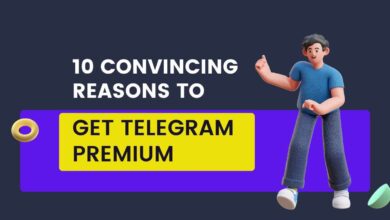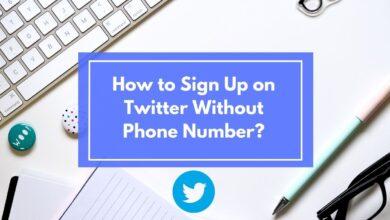YouTube Channel Strike Vs. Community Guidelines Violation
Having millions of creators share their videos and establish communities on the platform, YouTube has undeniably transformed the way in which we produce and consume content.
YouTube content creators must respect the platform’s policies and guidelines in order to preserve the credibility of their channels. As the saying goes, great authority comes with great responsibility.
YouTube’s Community Guidelines: The Rules of the Game
Prior to discussing the distinctions between a channel strike and a violation of the Community Guidelines, it is essential to comprehend YouTube’s Community Guidelines – the bedrock of a productive, secure, and all-encompassing community. The subject matter addressed by these guidelines includes hate speech, nudity, violence, spam, and copyright infringement. By strictly adhering to these principles, content producers can cultivate a constructive atmosphere for their audience.
The Lowdown on Channel Strikes
So, what exactly is a channel strike? Well, think of it as a form of YouTube discipline for content creators who violate the Community Guidelines. Strikes are issued in three different levels of severity:
1. Community Guidelines warning: This message functions as a friendly reminder from YouTube to ensure that you are well-versed in the Community Guidelines. It provides an occasion to correct any inadvertent errors without incurring significant repercussions. Consider it a yellow card, indicating the need for prudence and remedial measures.
2. First strike: The initial strike is more significant. Certain privileges may be temporally suspended for a content creator who receives their first strike, including the ability to live stream, upload videos exceeding 15 minutes in length, or utilise other features. This is tantamount to receiving a red card; you are now subject to probation, which must be taken seriously.
3. Second strike: A second strike signifies a more serious violation of the Community Guidelines. If a content creator receives a second strike within a 90-day period, their channel will face more severe consequences, including a temporary suspension or, in certain cases, termination. This is a clear indication that reform is absolutely necessary to maintain a presence on the platform.
4. Third Strike: Getting a third strike is the worst, which may also mean the end of your channel’s journey.
If you receive a third YouTube strike within a 90-day period, your channel will be permanently terminated. This means that all of your videos will be deleted, your account will be disabled, and you will not be able to create any new channels.
If you receive a strike, you will be notified by email and you will be able to see the reason for the strike in your YouTube Studio. You can also appeal the strike if you believe that it was issued in error.
To avoid receiving strikes, it is important to familiarize yourself with YouTube’s Community Guidelines and Copyright Policy. You should also be careful about the content that you upload to YouTube, and you should avoid uploading anything that is violent, hateful, or discriminatory.
Understanding Community Guidelines Violations
Although strikes function as disciplinary measures, the underlying offences that precipitate them are violations of the Community Guidelines. Constraints of YouTube may be disregarded in a multitude of ways, including the dissemination of explicit material, hate speech, impersonation, or harassment. It is crucial that creators actively moderate and evaluate their content prior to disseminating it to their audience in order to prevent any potential violations.
If you are unsure whether or not something violates the Community Guidelines, err on the side of caution and don’t upload it. If you receive a strike, appeal it immediately if you believe that it was issued in error.
Be respectful of other YouTubers and do not post anything that could be construed as harassment or bullying.
The Distinctions: Strikes vs. Violations
Now that we’ve established what strikes and violations are, let’s highlight the key differences between the two:
A violation of the Community Guidelines results in a strike, while the term “violation” denotes the specific act of transgressing these guidelines. YouTube implements strikes as formal disciplinary measures in reaction to violations of its guidelines. Commence strikes in retaliation for your actions, signifying that any additional escalation will yield considerably more severe repercussions. In contrast, violations are the conduct itself—the transgression, the failure to adhere to the established boundaries.
Consider the scenario where a content creator has uploaded a video that includes explicit material. The explicit content deed violates the Community Guidelines in the given context. As a result of this infringement, the creator was subsequently issued a strike.
How to Respond: Strikes and Violations
Receiving a strike or violating Community Guidelines can be disheartening, but there are steps you can take to mitigate the situation and prevent future offenses:
1. Handling Strikes: It is vital not to despair in the event that you experience a strike. Analyse the situation objectively and with composure. Should you hold the belief that the strike was issued in error, you may file an appeal of the decision by adhering to the guidelines furnished by YouTube. In this situation, it is critical to demonstrate honesty and accountability by acknowledging any errors committed and delineating the measures implemented to avert analogous challenges in the future.
2. Preventing Violations: Avoiding Community Guidelines violations is always the best approach. Regularly review and moderate your content to ensure it adheres to the guidelines. Pay attention to the comments section, as inappropriate comments could also lead to penalties. Stay informed about YouTube’s evolving policies and guidelines to ensure your content remains compliant.
Remember, a proactive approach can save you from unwanted strikes and violations in the long run. By practicing self-moderation and being aware of the ever-changing trends and policies, you can cultivate a safe and thriving community on your channel.
Conclusion
It is imperative for content creators to grasp the subtle distinction between a channel strike and a violation of the Community Guidelines. Strikes are formal disciplinary measures imposed by YouTube in response to violations of guidelines, whereas violations are the specific offences that prompt these strikes. To guarantee an inclusive, courteous, and pleasurable YouTube experience for both producers and viewers, it is crucial that we acquaint ourselves with the platform’s Community Guidelines and remain mindful of the content we produce. Let us willingly accept the duty of creating YouTube content, carefully adhere to the regulations, and consistently promote a flourishing community on this exceptional platform.



